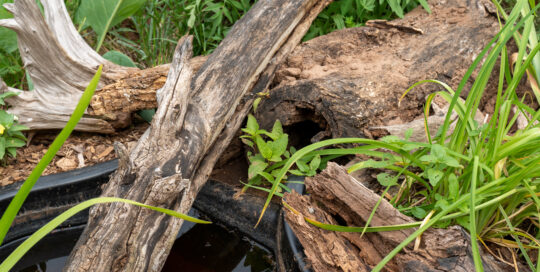A few of the butterflies and other creatures in my yard this weekend
Views: 474

Today’s blog is a photo essay. I wanted to share some of the beauties taking advantage of my pollinator-friendly yard. I have lots of skippers, a few swallowtails, several different species of spiders, and many other insects. In addition to these insects, I have lizards, frogs, toads, snakes, deer, squirrels, prairie voles, rabbits, opossums, raccoons, and lots and lots of birds. All of these species contribute to my diverse and healthy ecosystem. I hope you enjoy my pictures.
Tiger swallowtail
This morning I caught this Eastern tiger swallowtail feeding on my wild bergamot (Monarda fistulosa). Monarda is a great plant for butterflies, bees, and other pollinators, and it spreads slowly. I never water this plant, and it comes back every year, even after severe drought. Of course, tiger swallowtails are gorgeous and easily recognizable. They use various trees and shrubs as host plants, including cottonwoods, lilacs, tulip trees, ash, birch, and willows.

Spiders, spiders everywhere
For some reason, I’m finding baby spiders everywhere this year. All babies are cute, right? These two are no exception: a tiny jumping spider and an itsy bitsy green lynx. These guys are not scary at all!
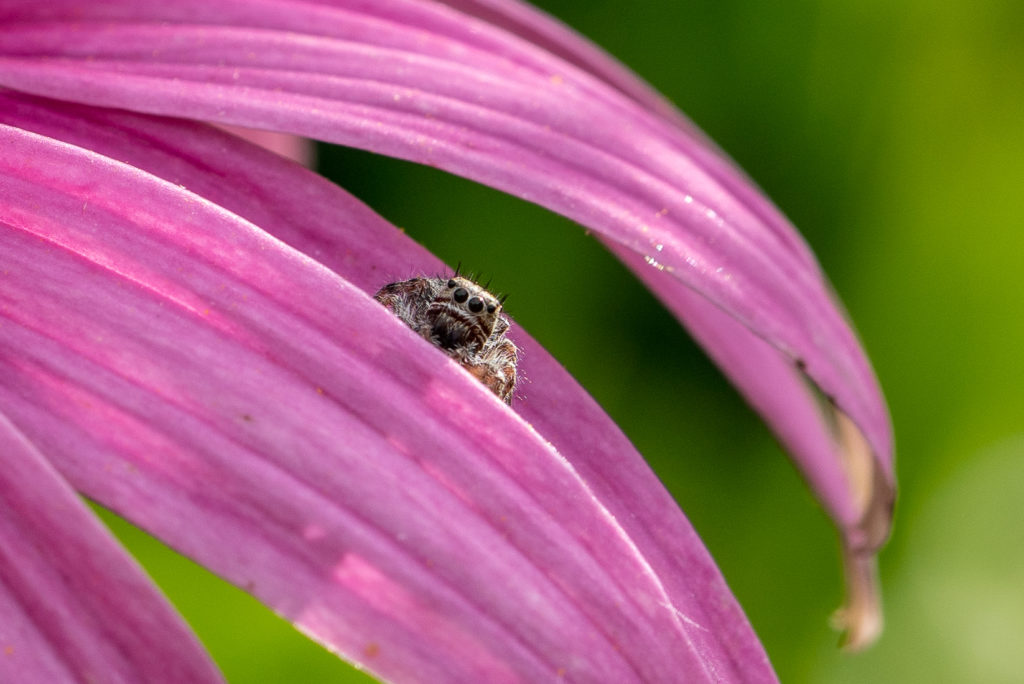
Jumping spider

Green lynx spider
Pearl crescent butterflies
Pearl crescents are common butterflies in my yard, so common that I typically ignore them. But this year, they’re remarkably colorful and have been displaying some unusual color patterns. Genetic variation is fascinating, so I’m taking lots of pictures of them. Asters are host plants for pearl crescents, so if you want these beauties in your yard, you should plant some.
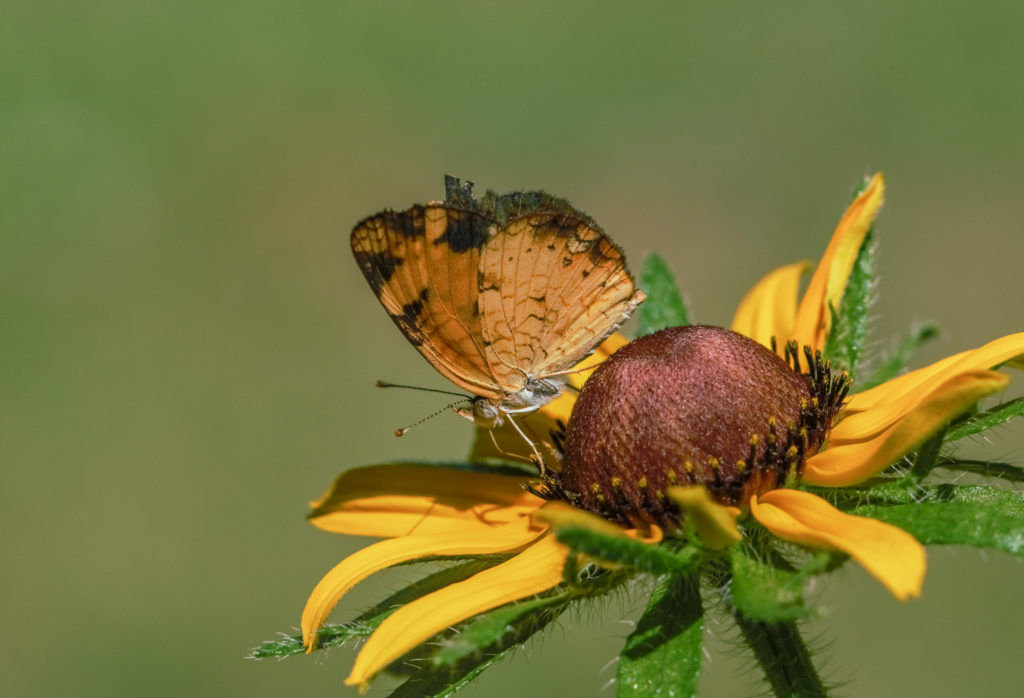


Milkweeds are food for everything
Well, milkweeds are not food for everything, but they are popular with several species. Here are four: milkweed aphids (also known as oleander aphids), small milkweed bug, unexpected cycnia moth caterpillar, and monarch caterpillar. With such diversity on milkweeds, you definitely want to get some milkweed into your gardens!
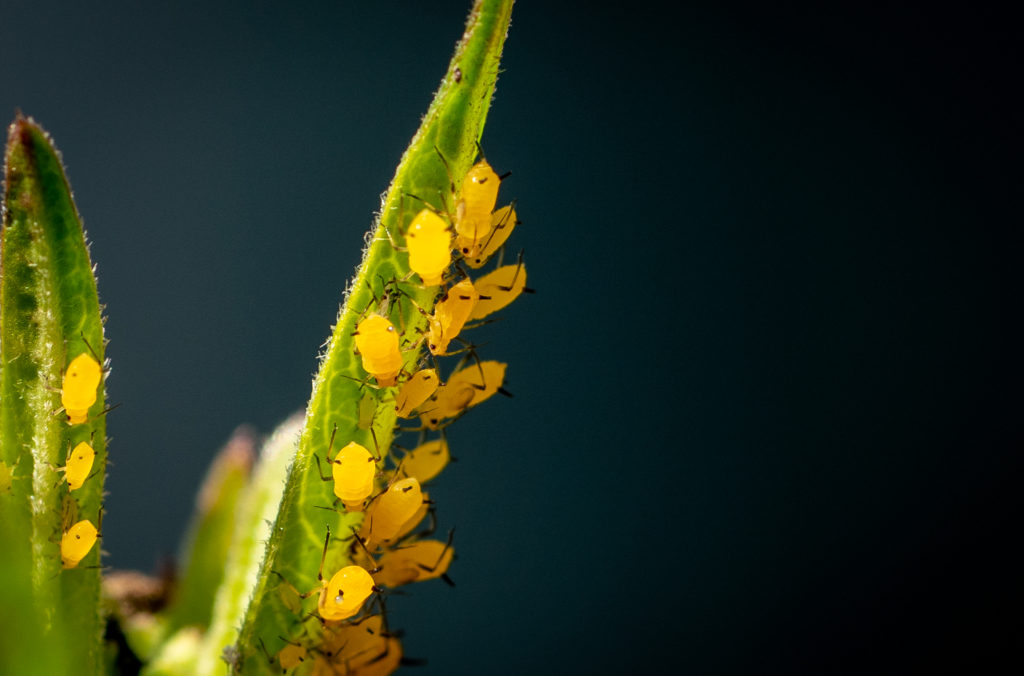
Oleander aphids typically won’t hurt the milkweed or other other species using your milkweeds. Syrphid flies and some wasps will parasitize them, so that’s a good reason to leave solitary wasps alone.
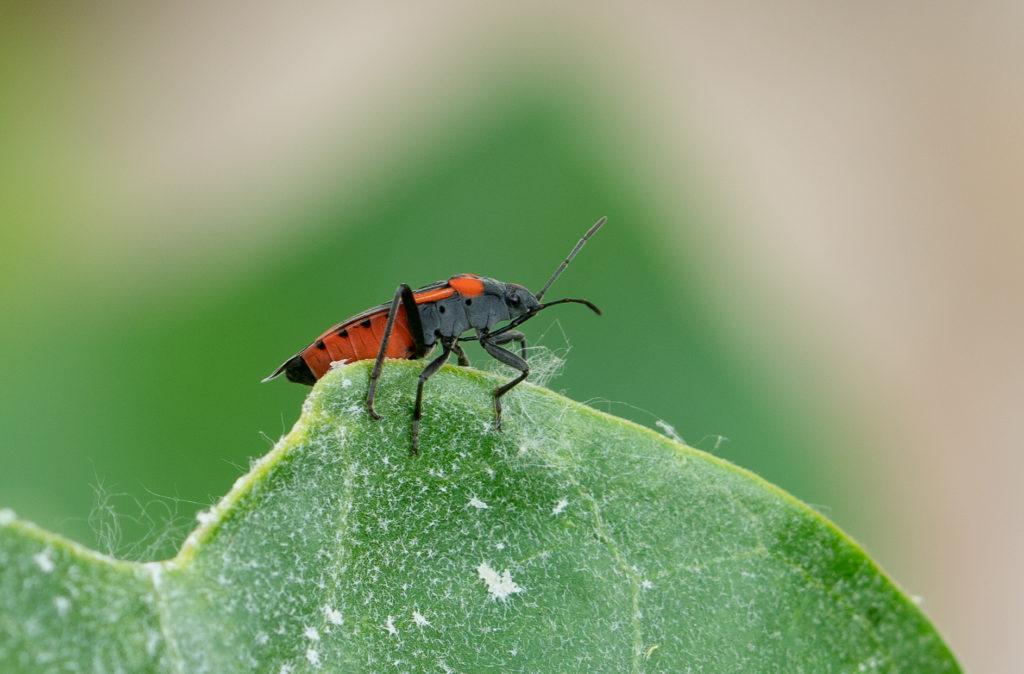
Small milkweed bug

Unexpected cycnia; in many areas it is considered rare

Unexpected cycnia moth, probably

Monarch caterpillar
Dull butterflies deserve some love, too
I admit, while most people understandably love showboat butterflies with brilliant colors, I have a soft spot in my heart for the less showy Lepidoptera. Here are some pictures of these lovely creatures; hopefully you can appreciate their subtle beauty, too, when viewed up close.

A snout, so named for obvious reasons.

Hayhurt’s scallopwing

Nysa roadside-skipper

Marine blue

Horace’s duskywing (most likely)

Dun skipper
Native bees
Natives bees are the best pollinators of native plants. Here are some of them doing their thing…

Carpenter bee

American bumble bee
Meet Leslie Miller
Leslie Ann Miller shares 3.5 acres in rural Oklahoma with birds, butterflies and wide variety of animals. She is currently transforming her yard with plantings…
Leslie's Recent Posts
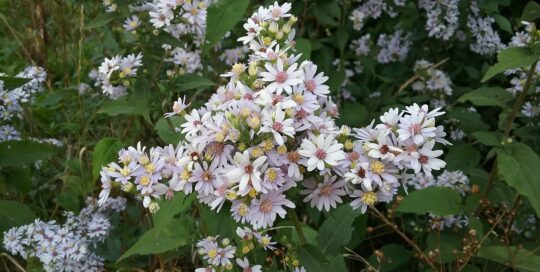
Drummond’s Aster: a native beauty that benefits bees
